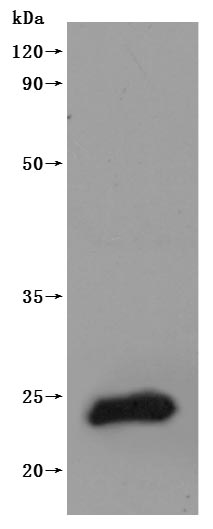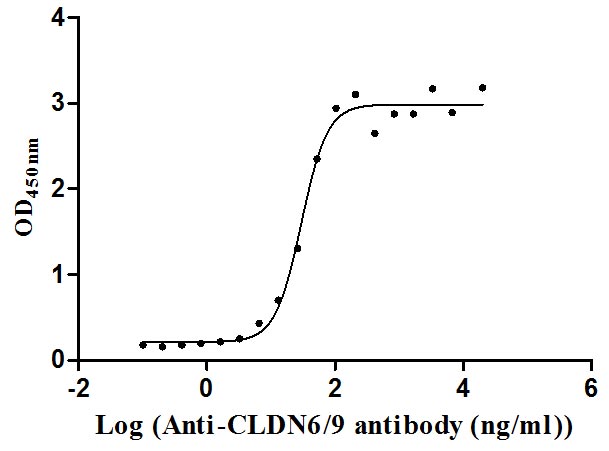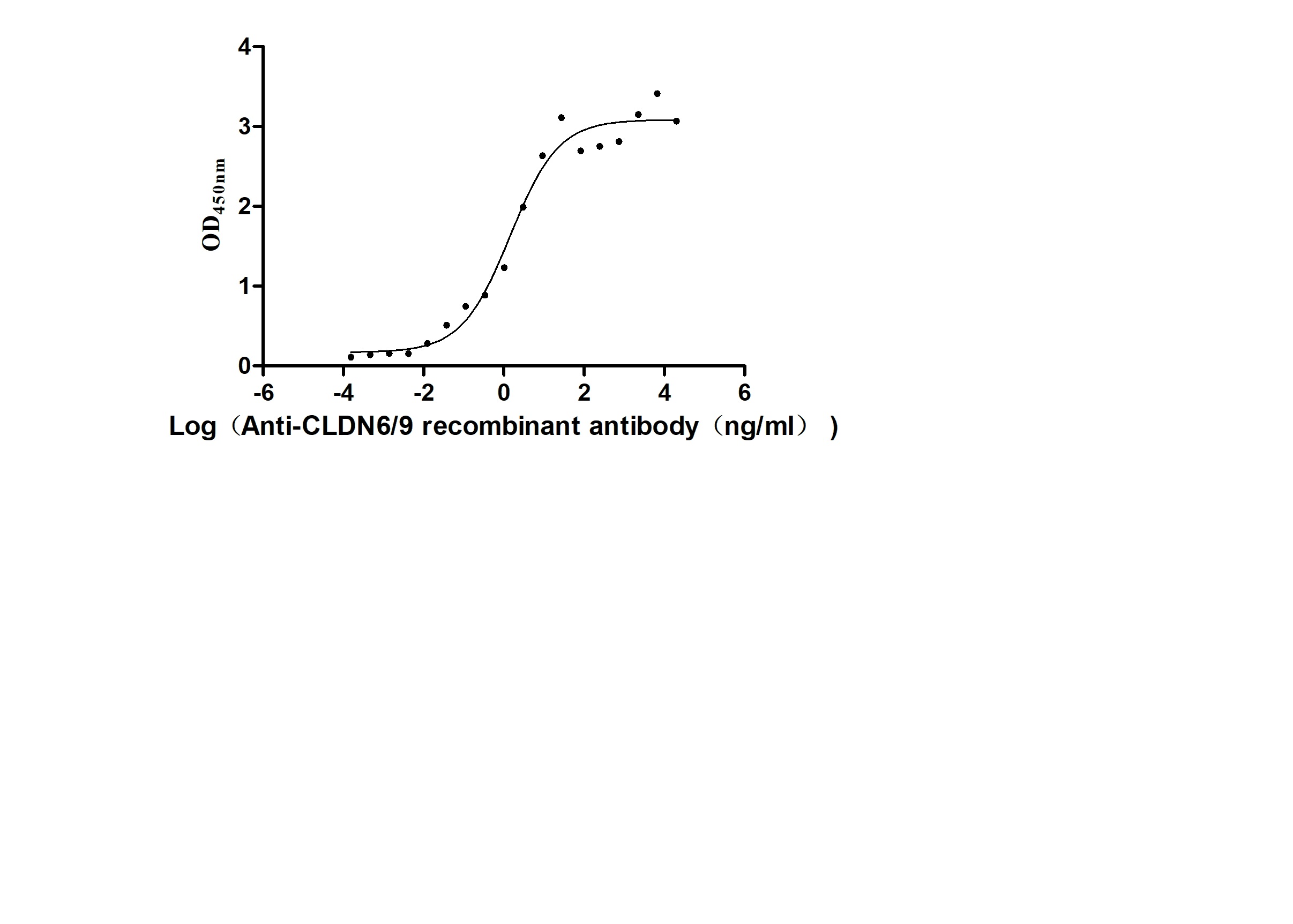This Human Claudin-9 (CLDN9) recombinant protein was produced in Mammalian cell, where the gene sequence encoding Human CLDN9 (1-217aa) was expressed with the C-terminal 10xHis tag. The activity was validated.
In addition, this Human CLDN9 recombinant protein was developed through the Virus-Like Particles (VLPs) Platform. It is a four-pass transmembrane protein.
CLDN9 (Claudin-9) is located on human chromosome 16p13.3, with a full length of 651 bases. The CLDN9 gene is overexpressed in the blood, pituitary and brain, and is highly expressed in endometrial cancer, liver cancer and gastric cancer cell lines. CLDN9 protein is mainly Localized at cell tight junctions, cell membranes and channel proteins.
CLDN9 is a tight junction protein. Abnormal expression of CLDN9 will lead to impaired tight junctions function and reduced barrier function, resulting in increased tissue permeability, which will eventually lead to many diseases including hereditary, allergic diseases, infectious diseases of various systems and even tumors. Therefore, CLDN9 is regarded as a potential target for the treatment of cancer or other diseases.









